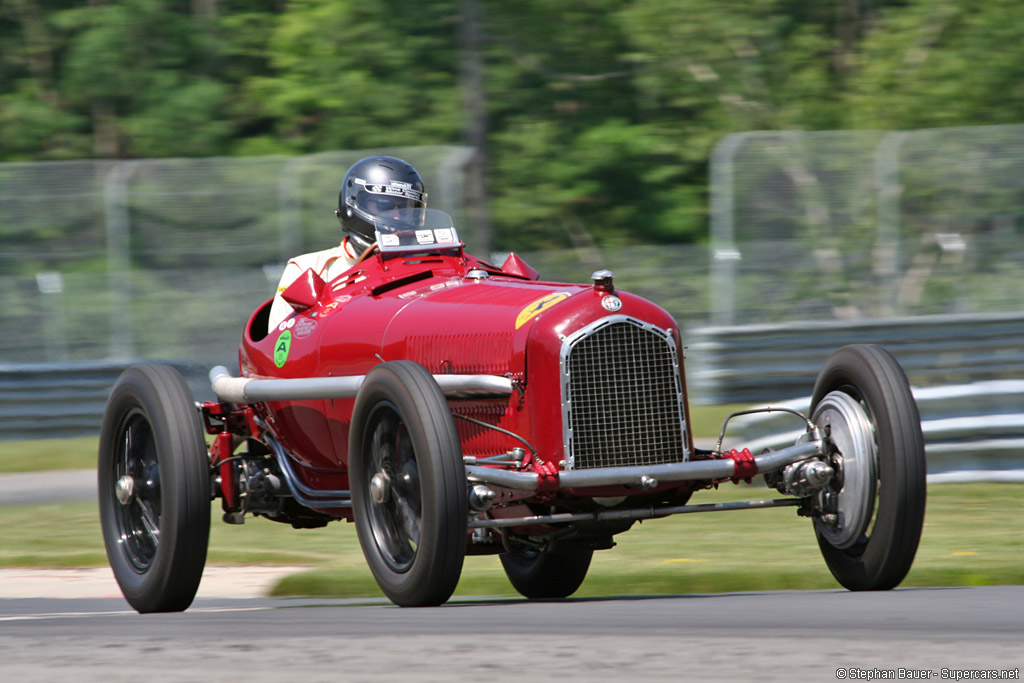Alfa Romeo P3
Car: Alfa Romeo P3 / Engine: 8-Cylinder In-line / Maker: Alfa Romeo / Bore X Stroke: 65 X 100 mm / Year: 1932 / Capacity: 2,654 / Class: Grand Prix / Power: 215 bhp at 5,600 rpm / Wheelbase: 104 in Track: 55 in front, 53 in rear / Top speed: 140+ mph / Weight: 1,545 lbs (Dry) / Tires: Dunlop tires 1932, Englebert tires 1933-35. 5.50 x 18 front, 5.50 x 18 rear.
The 1932 season would be fought without the German cars from Daimler Benz. It would also be one with an open formula which limited only the length of the races to five hours. Building upon the lessons learned with the P2, Jano created the P3. The P3 Monoposto was the first genuine single-seat racing car in Grand Prix racing. It was powered by an eight-cylinder engine built around two four-cylinder blocks, each fed by its own Roots supercharger. One of the engines major strengths was its low-speed torque. Power to the rear wheels was transmitted through twin driveshafts that allowed for the drivers seat to be placed lower in the chassis. The original leaf spring suspension was replaced in 1935 by an independent Dubonnet front suspension. The complete car weighed in at only 1,545 lbs. and were it not for its cast-iron block engine, it would have weighed considerably less.
No Subscription? You’re missing out
Get immediate ad-free access to all our premium content.
Get Started



